When it comes to maintaining your knives you have to differentiate between honing and sharpening. Keeping your knives sharp is a very important step when it comes to knife quality and ability. So, what’s the difference between honing and sharpening and how can you take the best care of your knives? Let’s find out!
Honing:
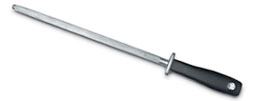
With regular use, any knife will lose its “bite”. Every edge has many very fine “teeth” which are bent to both sides of the blade after a certain time of cutting on a hard surface (you can´t see that with your eyes- only under a microscope). Using a WÜSTHOF sharpening steel will realign these teeth and keep the edge sharp for a long time of cooking enjoyment.
In our extensive range of sharpening utensils we also have some very fine steels on offer. These steels are very much like those used by butchers and people working in the meat-industry.
The fine surface will bring out an even finer edge than the regular steel but it does need to be used more often as well.
How to Use a Honing Steel:
Hold the steel with your left and the knife with your right hand (lefties simply do the opposite) and guide the blade with light pressure across the steel. Do this in an arching motion, side-to-side, at a 20o angle between blade and steel. Repeat this process 6 – 8 times. Never stroke each side more than once in succession.
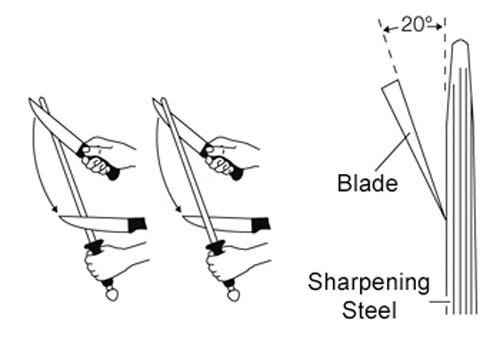
The “Tip Down“ method shown here works best as it lets you always see the contact point of the knife and the steel.With a little practice, you will find this becomes an easy motion. Now, your knife should be as sharp as the first time you used it. Please use a steel which is, at the minimum, the length of the blade you hone.
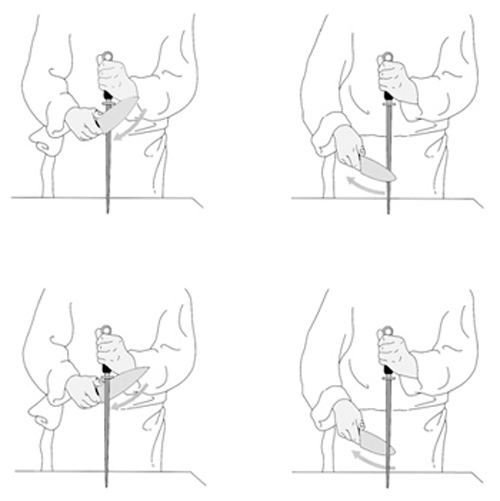
Sharpening:
Should your knife have become dull you might no longer be able to restore the edge by using a honing steel. That is when you have to use an abrasive sharpening utensil to reshape the edge to its original factory geometry.
Diamond Knife Sharpener:
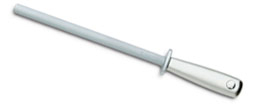
The diamond sharpener is coated with up to 2 million industrial diamonds. The abrasive surface allows you to create a new edge quickly and efficiently.
To be used like the honing steel.
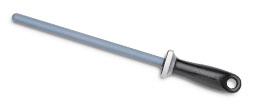
Ceramic is a very hard material. The surface of this rod is abrasive but not as abrasive as a diamond sharpener. Thus resulting in a finer edge.
To be used like the honing steel.
Ceramic Knife Sharpeners:
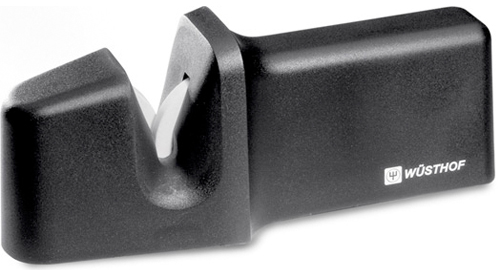
These sharpeners are an easy way to sharpen your knives. Two ceramic wheels offer you the right angle, just gently pull your knife through those wheels and you will have restored the edge.
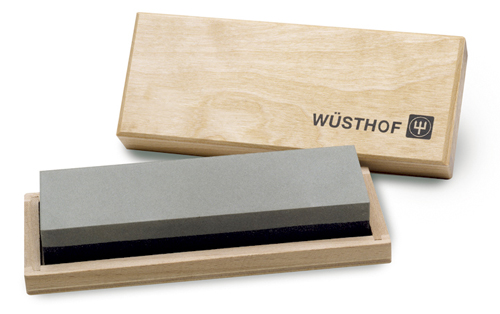
The use of a whetstone is an effective and professional way to get the edge of your knife back into shape. WÜSTHOF whetstones are available in different grits.
The smaller the value, the coarser the grit of the stone. Two standards to define the grit are in common.
The Japanese (J) and the European (F) standard:
Have a look at the WÜSTHOF whetstone 4451.
One side has coarse grit of F 400 / J 1000,
The other a fine grit of F 1000 / J 3000.
Use the coarse side for presharpening and to remove small nicks. Use the finer side of the stone for the final polishing of the edge. The finer the stone the smoother and sharper the edge.
How to Use the Whetstone:
- 1. Submerge the stone in water for about 5 – 10 minutes.
- 2. Continue to apply water while sharpening. The stone releases small particles during the sharpening process. This powder in combination with water allows the sharpening.
- 3. Place the stone on a slip-resistant base like a towel.
- 4. Start by using the coarse grit of the stone.
- 5. Move the blade back and forth at an angle of 10 – 15° using gentle pressure.
- 6. Start at the tip of the blade, continue with the middle section, and finish at the end of the blade. After a while you will notice a small burr at the edge.
- 7. Now repeat the same process on the other side of the blade.
- 8. Finally, turn the stone over and repeat the procedure, this time using the fine grit of the stone.
- 9. In order to remove the remaining burr, pull the blade at an angle over the stone. Now you will have achieved the best sharpness.
- 10. Rinse the stone and clean off the grinding residue. Clean your knife with hot water.
*Please take utmost care when sharpening your knives to prevent injuries.
. . . . . . . . . . . . . . . . . . . . . . . . . . . . . . . . . . . . . . . . . . . . . . . . . . . . . . . . . . . . . .
More on Wusthof Knives:
Part 1: Steel & Production
Part 2: The Evolution of a Forged Knife
Part 3: Details of a Forged Knife
Part 4: Precision Edge Technology
Part 5: The 3 Blade Types
Part 6: The Cook’s Knife
Part 7: How to Use a Cook’s Knife
Part 8: Save Your Fingers! Tips on Cutting Correctly
Part 10: Proper Care for Long-Lasting Knives
Part 11: Storing Knives
Part 12: Coming Soon

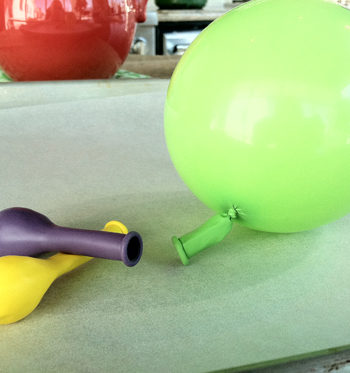
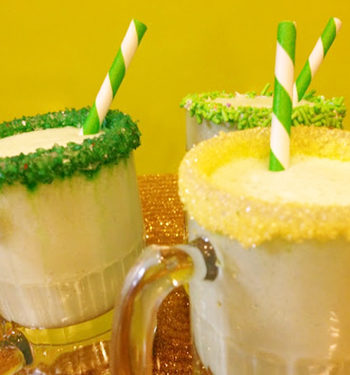
Amimul Ihsan
June 6, 2017 at 2:02 ami think it’s a very informative Guide to Keeping Knives Sharp.
thanks for sharing.
Dean
November 5, 2015 at 9:52 amFantastic guide on knife sharpening. Keeping a blade sharp is the one of the most important tasks that accompanies handling a knife. This resource will have you on your way to a sharp blade in no time. Thanks for sharing with us!